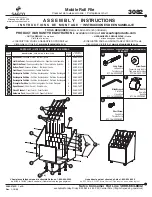
When this value is raised for a carrier operator,
aftertouch or breath control can affect the volume.
When this value is raised for a modulator operator,
aftertouch or breath controller can affect the tone.
Note:
If the AT EG Bias setting (see page 53) or the BC
EG Bias setting (see page 52) are not raised, this EBS
setting will have no effect.
When the EBS for an operator is raised, the
overall output level of that operator will decrease.
Aftertouch or breath controller will then be able to
raise or lower the output level of the operator, and
affect the volume or tone.
(5) KVS (key velocity sensitivity)
Function
Allow the force (velocity) of a note to affect operator
output level.
Settings
– 7 – + 7
Explanation
Settings of +1–+7 will make the volume (or
brightness) increase as you play more strongly. Set-
tings of –1– –7 will make the volume (or brightness)
decrease as you play more strongly.
This key velocity sensitivity setting is made in-
dependently for each of the four operators. Repeat-
edly press to step through operators
and program the values for each.
When the key velocity sensitivity for a carrier
operator is raised, the force with which a note is played
will affect the volume. When the key velocity sensi-
tivity for a modulator operator is raised, the force
with which a note is played will affect the tone.
Oscillator
(mode, coarse, fine, wave, detune, shift, range)
Press (OSCILLATOR).
Oscillator settings determine the pitch and waveform that
is output by each operator. These oscillator settings are
made independently for each of the four operators.
Repeatedly press to step through operators
and program the values for each.
The items in the display will depend on the setting
of the oscillator’s mode (see (1), below). If “ratio” has
been selected, (2) – (5) will be displayed. If “fix” has been
selected, (2) – (7) will be displayed.
(1) Mode
Function
Select the mode of each operator’s oscillator.
Settings
fix, ratio
Explanation
Select one of the following two modes.
fix mode
Note:
If the operator output level is extremely low, this
setting will have little effect.
"Key velocity" is actually detected by measuring
the "speed" at which you play a note.
The same pitch will be produced no matter which
note you play. This is often convenient when making
special effects, or percussion instruments. Specify the
pitch in Hz (hertz: the number of times the waveform
repeats every second).
ratio mode
The note you play will determine the pitch that is
produced. Use this mode when creating normal,
pitched instruments. With a setting of 1 representing
an A3 pitch of 440Hz, specify the pitch over a range
of 0.50 – 27.57. Modifying this setting will change
the pitch as shown in the diagram.
44
Voice Edit
Содержание V50
Страница 1: ...YAMAHA AUTHORIZED PRODUCT MANUAL DIGITAL SYNTHESIZER ...
Страница 2: ...DIGITAL SYNTHESIZER Operating Manual YAMAHA ...
Страница 4: ...DIGITAL SYNTHESIZER ...
Страница 130: ...Initialized performance settings SNGL 4LYR DUAL 8LYR Appendix 125 ...
Страница 131: ...SPLT SEQ4 126 Appendix SEQ8 Initialized voice settings ...
Страница 133: ...MIDI DATA FORMAT SYNTHESIZER SECTION MIDI reception transmission block diagram 1 MIDI reception conditions 128 ...
Страница 140: ...135 ...
Страница 141: ... Table 2 136 ...
Страница 142: ... Table 3 137 ...
Страница 143: ...138 ...
Страница 144: ...139 ...
Страница 145: ...140 Table 4 ...
Страница 153: ...Performance data blank chart You may copy the following chart as a memo sheet for your performance settings 148 ...
Страница 154: ...Voice data blank chart You may copy the following chart as a memo sheet for your voice settings 149 ...
Страница 160: ...YAMAHA VG87090 89 01 1 5 CR R1 Printed in Japan YAMAHA CORPORATION P O Box 1 Hamamatsu Japan ...
















































